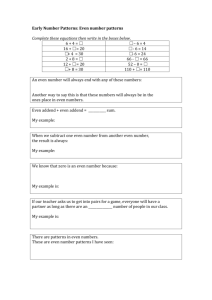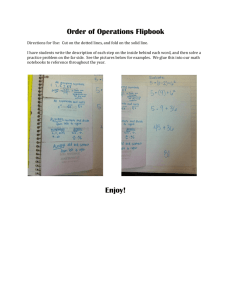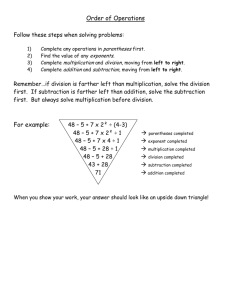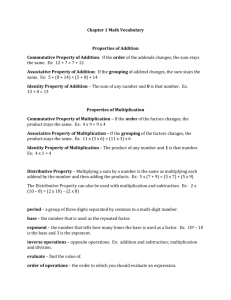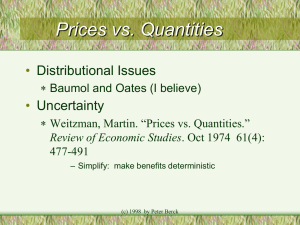Ordering and final thoughts on whole numbers
advertisement
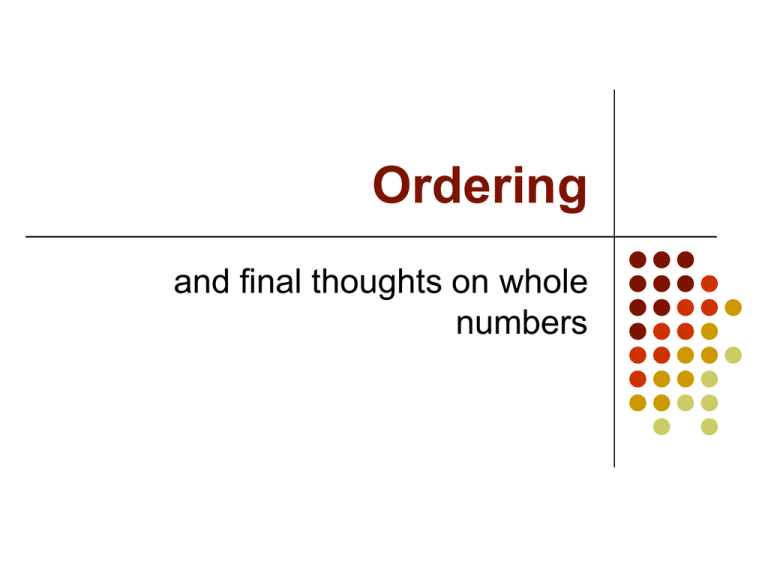
Ordering and final thoughts on whole numbers Language What does “7 is a factor of 56” mean? What does “k is a multiple of m” mean? What is a product in mathematics? How does it relate to the usual meaning of word product? What is a quotient? operation a + addend a - dividend = b b = b divisor c difference = factor c sum subtrahend factor a b addend minuend a = c product = c quotient Ordering What does it mean that a < b? For whole numbers a and b we say that a<b (or b>a) if there is a nonzero whole number n such that a+n=b. Q: Why should n be nonzero? Transitivity? What can you say about order of a and c if you know that a<b and b<c? Problems Is the following always true: a(b-c)=ab-ac Why or why not? How do you know? If a<b what can you say about a+c and b+c? What about a-c and b-c? Properties If a<b then a+c < b+c and if c is nonzero then ac < bc. What does 45 mean? Multiplication is a shortcut for addition. Exponents are shortcut for multiplication. Definition Let a be any whole number and m any natural number. Then am = aaa….a m factors Exercises Rewrite each of the following expressions using single exponent: 73 75 34 5424 (42)4 What do you notice? Can you write a general statement (theorem)? What can you say about division of powers of some number? Can you state a theorem? What is 50? What about 00? Order of operations 2+46 could be: 2+6+6+6+6 can be written as 2+46 it seems that multiplication should be done first. So, to avoid ambiguities and misunderstandings we agreed that Order of operations: 1. 2. 3. 4. Parentheses Exponents Multiplication, Division (left to right) Addition, Subtraction (left to right) Problems Write the following using only one exponent: x3x6 3795272 2316 A student was asked to simplify the expression 85 22 and wrote 85 22 =43. What do you think of that? If the product of two numbers is even and their sum is odd, what can you say about two numbers? Each of the following situations involved a subtraction problem. In each case tell whether the problem is best represented by take away approach or the missing addend approach, and why. Then write an expression that can be used to answer the question: Jack has 137 basketball cards and Quinn has 163. How many more cards does Quinn have? Regina set a goal of saving money for a $1500 down payment on a car. Since she started, she has been able to save $973. How much more money does she need to save in order to meet her goal? Riley was given $5 for his allowance. After he spent $1.43 on candy at a store, how much did he have left to put into savings for a new bike?

